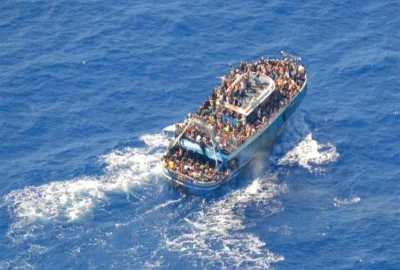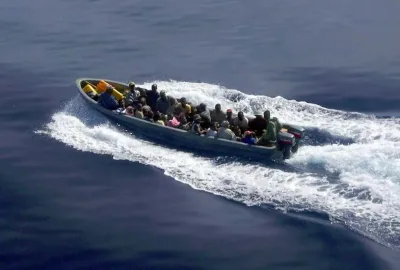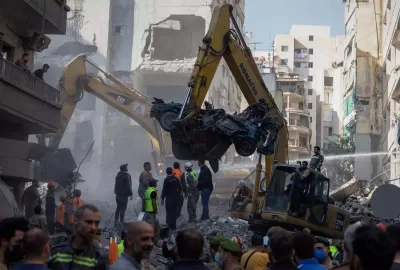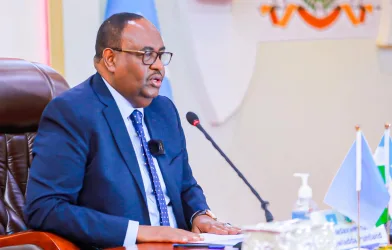SummaryThe entire Sool, Sanaag, and Cayn (SSC) region is on the verge of exploding after the…
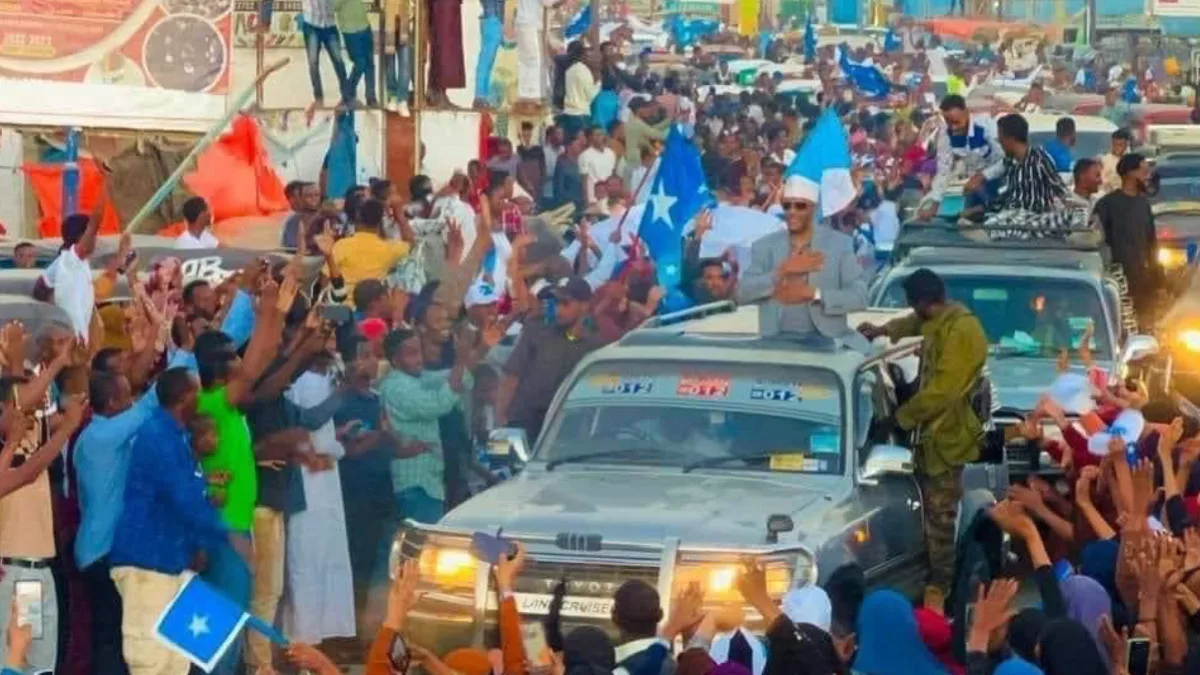
Summary
The entire Sool, Sanaag, and Cayn (SSC) region is on the verge of exploding after the people in Laas-Aanood rose to oppose the forceful occupation, arbitrary arrests, extrajudicial killings, censorship, and blockade on economic development in the region by the Somaliland Administration.
At the core of this popular uprising is the ideological differences on secession-ism to which the citizens of SSC regions vehemently oppose. This latest wave of uprising has been further ignited by the latest assassinations of community figures, part of a decades-long campaign of assassination against prominent individuals.
All sectors of the society in the SSC regions have collectively decided to give Somaliland an ultimatum to withdraw peacefully or face a catastrophic civil war. There is evidence of heavy military mobilization by the Somaliland’s administration which intends to keep its grip firmly on the region at all costs. In response, the residents of the SSC regions have also begun mobilizing and preparing themselves to repel any
offensive.
Historical Background
Somaliland was established in 1991 by the Somali National Movement (SNM), who declared independence from the Somali state without the consent of the people of the SSC regions it claims under its borders. SSC is a unique region when it comes to history and demographics, and it has unique experiences with the founding of the Somali state. The people of SSC experienced colonial history, and their collective and shared memories with regards to colonial occupation differs from that of Hargaisa and Burco; the SSC regions did not sign the clan treaties used by British colonies to establish a British-Somaliland protectorate. The SSC people were the backbone of the Somali resistance to colonization, rejecting European powers and igniting a decades-long struggle for freedom led by the Dervishes.
The Dervish resistance was finally broken by British Royal Air Force aerial bombing with the support of large Somali, Indian, and African expeditions led by Britain. During the resistance, a third of the people living in the SSC region perished. This event is ingrained in the people’s memories and is part of what makes them who they are today.
The Dervish resistance to colonialism helped build Somali nationalism, which led to the creation of the Somali state. At the time of the creation of the Somali Republic, the SSC communities were the link between the south and the north. After the Somali state fell apart, the Somali National Movement unilaterally declared independence from the rest of Somalia and claimed all of the territories that had been part of the British-Somaliland protectorate, without the people’s consent.
In 2001, Somaliland started a military campaign to take over all SSC lands without the approval of inhabitants as local people didn’t agree with Somaliland’s secessionist aspirations because they saw themselves as Somalis who belonged to the rest of Somalia. They saw and still see Somaliland as an entity established to ensure the supremacy and protection of one clan at the expense of others.
It is impossible for the people of SSC to accept separation from Somalia and adopt Somaliland’s political ideology because they do not identify with the historical experiences, grievances, and ideologies that define what it means to be a Somalilander; rather, their history, experience, and ideology are inseparable from those of Somalia. As a result, two irreconcilable sets of beliefs and ideologies continue to be at play
at the region.
Somaliland Occupation
In October 2007, Somaliland violently seized the capital of the Sool region, Laas-Aanood. This occupation resulted in the displacement of tens of thousands of people, the exile of all traditional leaders, academics, business people, and prominent politicians, and the cessation of investment and visits from the diaspora.
With the arrival of Somaliland, inter-clan feuds intensified, and a campaign of assassinations began in the city, targeting what was left of Laas-Aanood’s elite. To date, over 120 people have been murdered, and all of these cases remain unsolved.
Recently, in a press briefing, the president of Somaliland claimed that only 40 people were killed and that most of the cases were solved through the Somaliland judicial
system. This was the first time that anybody has heard of this, and as of now, there are no known cases on record that have gone through the judicial system, and the families of the victims await justice. Musa Bihi’s claims about bringing justice to victims are not true, and they are simply tactics to obscure the facts on the ground and are nothing but a smokescreen.
On top of the assassinations, there have been a number of extrajudicial killings, which Somaliland justified as collateral damages. Over the last 20 years, whenever there was a protest, indiscriminate and disproportionate forces were used, which caused the deaths of innocent and peaceful protesters. Furthermore, despite the fact that Laas-Aanood has facilities, anyone arrested there is transferred to Mandera, Hargaisa, or Burco, and families are forced to pay extortion money to be able to see their relatives, while those who cannot pay suffer endlessly in these jails.
In addition to Laas-Aanood’s experience,there have been numerous skirmishes in parts of the SSC regions, such as Kalshaale, Bocame, Taleex, Saxdheer, and Buhoodle. Hundreds of people have died in Kalshaale in Somaliland’s attempt to capture the city of Buhoodle.
Human Rights Violations
In areas of the SSC controlled by Somaliland, there is no freedom of speech, no right to assembly, no freedom of expression in free media, nobody is allowed to question Somaliland’s rights to be in these regions, it is criminal to express unionist beliefs, and anybody who exhibits their unionist political views is criminalized. Anyone seen with a Somali blue flag, for example, is arrested and taken to jail.
However, the most gruesome human rights violations happened in October 2021, as the world watched Somaliland’s administration in Laas-Aanood illegally uprooting Somali citizens who lived in the city for decades. It was a blatant act of clan cleansing targeting anyone originating from Southern Somalia with immediate deportations and expulsions, creating hostilities between the people of SSC and their fellow Somalis.
Somaliland’s security related justifications for these acts can only be taken as a lame attempt at scapegoating communities from Southwest State as the source of the city’s insecurity.
Economic and Development blockade
Due to Somaliland’s arbitrary occupation, investment in Laas-Aanood has dried up; business people have taken their capital out of the region and invested in other parts of Somalia, causing deficient economic growth in the regions. As a result, the SSC region is one of the most economically deprived areas in Somalia.
At the same time, Somaliland uses aid from international donors as a political tool to force people to adopt the Somaliland political identity. It also portrays the region as a hotbed of violent extremism in order to keep INGOS and international monitoring groups out of it.
Over the last 20 years, Somaliland hasn’t provided any basic services to the citizens of SSC regions. Basic human rights such as primary health care and education are provided only by the efforts of local citizens. As a result, the city has one of the highest infant mortality rates, one of the lowest doctor-to-population ratios, and one of the lowest school enrollment rates in Somalia.
Somaliland’s misinformation
Somaliland claims, as evidently stated in their last letter to the International Community, that the Sool region is a hotbed of terrorism and extremism, is but a poor attempt to obscure themselves from the grave human rights violations they have committed in Laas-Aanood. The idea that outside forces were behind the protests is not true, and Sool, Sanaag, and Cayn have never been bases for terrorism since
terrorists don’t control a single inch of SSC land and there are no known cells operating in these areas.
There are no outside forces involved in the conflict between the SSC and Somaliland. It is just a result of Somaliland’s cruel treatment of the SSC populations and their desire to force the SSC to join its secessionist ideology.
Current Situation
Following the murder of Cabdifataax Cabdullaahi Cabdi (Hadraawi Sangub) on the 27th of December 2022 by an unknown gunman, a peaceful civilian protest erupted in the city, and the Somaliland administration responded with heavy-handed, indiscriminate force, using live bullets against demonstrators who were
primarily women and children.
As the protesters persisted, Somaliland deployed its military and foreign trained rapid response unit (RRU) to crack down on them, and they began using weapons of war such as anti-aircraft machine guns mounted on the back of pickup trucks, killing women, children, and men indiscriminately, some during Friday prayers at the Laas-Aanood Central Mosque.
The brutality of Somaliland forces increased over the course of several days, culminating on the night of 4th January 2023, when a local resident named Mohamud Ali Seedle was summarily executed in the heart of Laas-Aanood.
After his murder, Somaliland forces refused his corpse to be collected by his family, and local residents began to take up arms against Somaliland forces, forcing Somaliland forces to withdraw from the city. As of today, the casualties of this conflict are 20 deaths and more than 60 injuries.
The Laas-Aanood community met in a conference and chose a 33-member cross-sectional committee to find a peaceful solution to the Somaliland problem in the SSC regions. After days of deliberations and wider consultations, they released a 12-point communique, calling for all non-SSC Somaliland forces to make a peaceful withdrawal from the regions since they are occupying forces without any mandate.
All the traditional leaders who were in exile have returned to Laas-Aanood for a conference to solve the SSC-Somaliland questions once and for all. The overwhelming majority of the SSC communities are united in their determination to remove Somaliland from their lands. They are also united in their aspiration to determine their own future. And they are all united in their belief that their regions are part and parcel of Somalia, and that secession is sacrilege.
Over the last three weeks, the 33-member committee has been meeting with a different part of the communities within SSC regions, and they will hold a grand conference in Laas-Aanood over the coming days, led by traditional leaders, civic societies, and all stakeholders. It is at this conference that the destiny of SSC regions will be determined.
We want a Somalia that is stable and at peace with itself and its neighbors for the security of the Horn of Africa. As such, we have agreed that all matters concerning the future of SSC should be temporarily dealt with through the traditional leaders. We call upon the International Community to treat Somaliland and the SSC region equally; and to hold those responsible for the grave human rights violations committed in Laas-Aanood accountable through regional and international legal bodies. And given the blatant misappropriation of Aid by the Somaliland administration, we ask that all aid or support to the people of the region to be delivered through independent non-governmental organisations.
Approved by the selected committee of 33 members and signed on their behalf by
Chair
Maxamud Salaad Warsame
General Secretary
Abdinasir Hassan Hirsi


